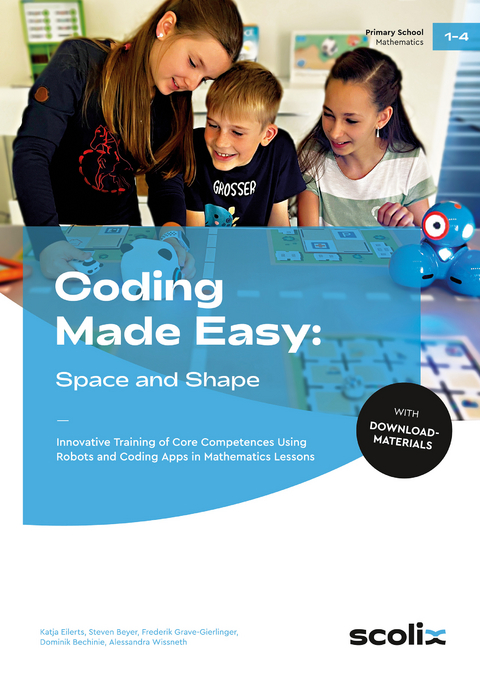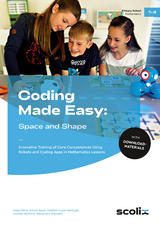Coding Made Easy: Space and Shape
Innovative Training of Core Competences Using Robots and Coding Apps in Mathematics Lessons (1. bis 4. Klasse)
Seiten
2023
scolix in der AAP Lehrerwelt GmbH (Verlag)
978-3-403-10769-9 (ISBN)
scolix in der AAP Lehrerwelt GmbH (Verlag)
978-3-403-10769-9 (ISBN)
lt;b>Proven digital learning environments for modern mathematics teaching!
Digital learning environments for modern math class!
How does the robot in Cornerstown reach its destination? How must Linda the ladybug crawl to create a frieze pattern along her path? Within these four learning environments, your students engage deeply with plane shapes, frieze patterns, coordinate systems, networks, and paths. Initially, they explore these concepts using physical materials, and then switch to digital tools. The approach is simple and effective: the children create basic programs, experiment with them, and observe the results of their individual solutions. Through this process, mathematical skills, spatial imagination, computational thinking, and logical reasoning are fostered. But which programmable materials are suitable for primary school?
The research team of the math.media.lab at Humboldt-Universität (Berlin) has tested various digital materials specifically for use in primary school mathematics lessons. The four learning environments presented here are carefully designed to work well with selected robots and coding apps. However, they can also be adapted to accommodate other programmable materials. By embracing a technology-open approach, you provide optimal support to your students, empowering them to progress steadily in their mathematical journey!
Digital learning environments for modern math class!
How does the robot in Cornerstown reach its destination? How must Linda the ladybug crawl to create a frieze pattern along her path? Within these four learning environments, your students engage deeply with plane shapes, frieze patterns, coordinate systems, networks, and paths. Initially, they explore these concepts using physical materials, and then switch to digital tools. The approach is simple and effective: the children create basic programs, experiment with them, and observe the results of their individual solutions. Through this process, mathematical skills, spatial imagination, computational thinking, and logical reasoning are fostered. But which programmable materials are suitable for primary school?
The research team of the math.media.lab at Humboldt-Universität (Berlin) has tested various digital materials specifically for use in primary school mathematics lessons. The four learning environments presented here are carefully designed to work well with selected robots and coding apps. However, they can also be adapted to accommodate other programmable materials. By embracing a technology-open approach, you provide optimal support to your students, empowering them to progress steadily in their mathematical journey!
| Erscheinungsdatum | 15.08.2023 |
|---|---|
| Verlagsort | Hamburg |
| Sprache | deutsch |
| Maße | 209 x 297 mm |
| Gewicht | 311 g |
| Themenwelt | Schulbuch / Wörterbuch ► Unterrichtsvorbereitung |
| Schlagworte | 1. bis 4. Klasse • Geometrie • Grundschule • Mathematik |
| ISBN-10 | 3-403-10769-8 / 3403107698 |
| ISBN-13 | 978-3-403-10769-9 / 9783403107699 |
| Zustand | Neuware |
| Haben Sie eine Frage zum Produkt? |
Mehr entdecken
aus dem Bereich
aus dem Bereich
Differenzierung mit Selbstkontrolle
Buch | Softcover (2023)
KOHL VERLAG Der Verlag mit dem Baum
CHF 29,95
Differenzierung mit Selbstkontrolle
Buch | Softcover (2023)
KOHL VERLAG Der Verlag mit dem Baum
CHF 33,90
viele Varianten, mehr Abwechslung, viele Einsatzmöglichkeiten
Buch (2024)
Auer Verlag
CHF 36,35




